#AdobeSign
Explore tagged Tumblr posts
Text
¿Con qué FIRMO mis papeles digitales? 🤔 ¡Programas de Firma Digital al Rescate!
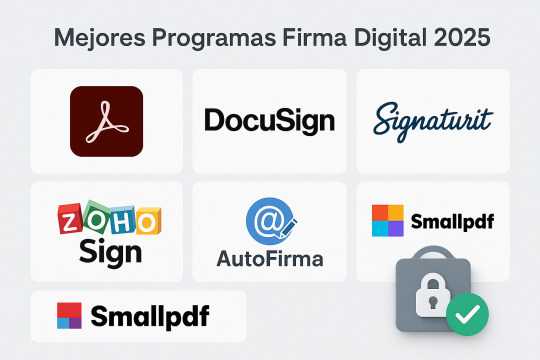
Ok, tienes tu firma digital (o estás en ello, ¡bien hecho!), pero ahora necesitas el "boli" digital para usarla, ¿verdad?
Ese "boli" son los programas de firma digital. ¡Hay un montón! Si quieres estar al tanto de todo sobre la factura electrónica y más, sigue leyfacturaelectronica.com.
Y si el concepto de "firma digital" te suena a chino, empieza por nuestra guía básica que te explica qué es y para qué sirve.
¿Qué programa uso? ¡Depende! 👇
Para cosas del Gobierno (Hacienda, etc.) y firmar algún PDF tú mismo:
AutoFirma: ¡Gratis y oficial! Necesitas tu certificado (FNMT o DNIe). 🏛️👍
Para firmar PDFs de vez en cuando (sin enviar a nadie):
Adobe Acrobat Reader DC: El que casi todos tenemos para ver PDFs. También firma (versión gratis básica). 📄✔️
Para enviar contratos/documentos a OTROS para que firmen, y necesitas seguimiento y más seguridad (suelen ser de pago ):
Adobe Sign
DocuSign
Signaturit
Zoho Sign ¡Y muchos más! Estos son como un servicio de mensajería y notaría digital todo en uno. 🚀
OJO con las Facturas Electrónicas B2B: Para estas, no vale cualquier programa. Necesitas que tu programa de hacer facturas (TPV, ERP...) sea el que te permita usar tu firma digital en el formato oficial (Facturae XML). ¡No es solo firmar un PDF! 🧾✍️
Consejo Rápido:
¿Para qué lo quieres? (Trámites, contratos, facturas...)
¿Gratis o puedes pagar un poco?
¿Necesitas enviar a otros?
Elegir bien tu programa de firma digital te ahorra tiempo y te da seguridad.
No te pierdas nuestra guía fundamental sobre qué es realmente la firma digital. Y para todo lo demás sobre facturación, ¡ya sabes!, leyfacturaelectronica.com.
#ProgramasFirmaDigital#SoftwareFirmaDigital#FirmaElectronica#FacturaElectronica#Autonomos#PYMES#Digitalizate#AdobeSign#DocuSign#AutoFirma#Signaturit
0 notes
Text
Avanzando en transformación digital con la firma electrónica
Avanzando en transformación digital con la firma electrónica
Todas las organizaciones a nivel global tuvieron que dar un giro de 180 grados en la forma en la cual desarrollaban sus procesos. A raíz de la pandemia, la competitividad aumentó y cualquier compañía que se quiera mantener vigente en el mercado tendrá que simplificar la manera de hacer las cosas, con el objetivo de facilitarle la vida a sus clientes, es decir, tener un servicio al usuario rápido,…

View On WordPress
0 notes
Photo

Read our new article and see how the Coronavirus is impacting the consumers behavior
#mytraio#business#smallbusiness#ecommerce#ecommercetrends#outgrow#ecomdash#amazonsellers#facebookshop#enterpreneurs#fashionindustry#adobesign
0 notes
Photo

#AdobeSign is a perfect tool for smart organizations Discover more > https://t.co/A1kwemQoNj @AdobeDocCloud @antgrasso via @dbi_srl #esign https://t.co/lEiLv5yI6o
— dbi.srl (@dbi_srl) May 13, 2021
1 note
·
View note
Photo

Hey! I checked out what my signature style said about me & its super fun. 😁 Find out what yours says about you: https://t.co/QkWBiwWr7i https://t.co/SBd9UCd4BN #adobesign #personality #signature
0 notes
Text
Adobe 開放更多 Document Cloud免費工具 延長 Adobe Sign 免費試用期

疫情之下,很多工作環境都由辦公室變成家居,但始終家中電腦的軟件未必齊全,可以做到全部工作。而 Adobe 宣布將開放更多免費工具和服務,並延長產品試用期,其中Adobe Acrobat Reader和Adobe Scan 將繼續供所有人免費使用,用戶於 5 月 31 日前更可每天免費使用網頁版的 Acrobat PDF 工具轉存與壓縮工具多達 10 次,同時延長 Adobe Sign 免費試用期至 90 天。
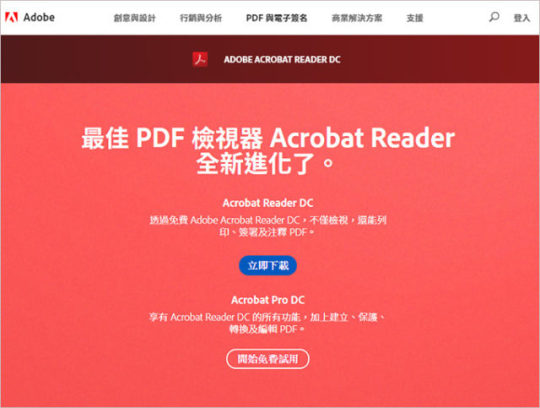
作為最早、最受歡迎的 PDF 檢視器,Adobe Reader DC 讓用戶可靠地檢視、審閱、評論、填寫、分享和簽署 PDF 檔案。Acrobat Reader DC 已連接至 Document Cloud,因此用戶身處任何地方均可輕鬆地使用 PDF 檔案,甚至可以在Box、Dropbox、Google 雲端硬碟或 Microsoft OneDrive 存取檔案。

免費的 Adobe Scan 應用程式提供隨身掃描功能,特別是現時不少用戶均身處於辦公室或者課室以外的地方,他們可以運用這個應用程式輕鬆地將任何書面文件轉換為高品質的 PDF 檔案,以便填寫、註釋、簽署、發送和儲存檔案。Adobe Scan 的人工智慧技術 Adobe Sensei 為用戶帶來自動增強掃描、調整角度並檢測檔案邊界等功能。
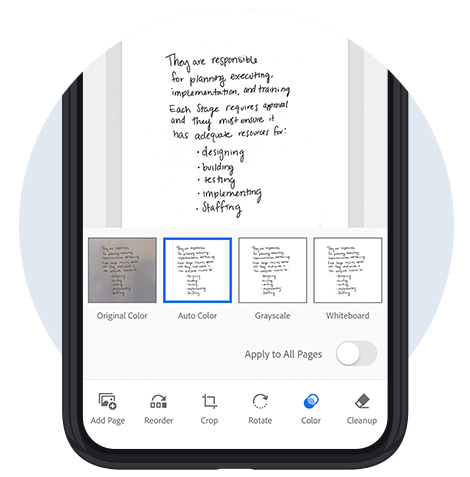
Adobe Acrobat DC 的訂戶可享有更多的 PDF 功能,例如在共同協作的檔案上進行審閱、與其他檔案類型相互轉存、壓縮檔案大小等。現在,用戶更可免費於桌上電腦、網頁版和流動裝置共同協作 PDF 檔案,不再需要以電子郵件發送 PDF 附件及管理多個版本。只需共享一個 PDF 檔案,不限人數的審閱者即可於同一檔案內檢視、評論和解決分歧,省卻反覆來回寄送檔案的工序。
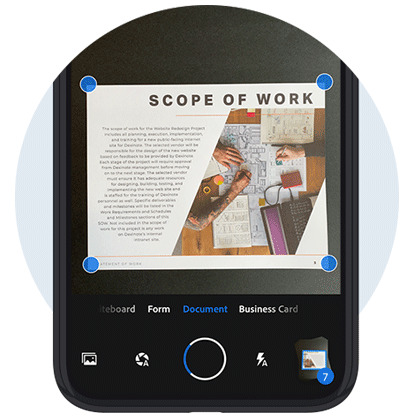
除了使用桌面版或流動應用程式來處理 PDF 檔案外,用戶也可以使用網頁版的 Acrobat PDF 工具。Adobe已延長免費使用轉存和壓縮工具的權限至 5 月 31 日。用戶每天可使用每個功能多達 10 次,包括輕鬆地將 Microsoft Word、Excel、PowerPoint 和 JPG 檔轉存為 PDF 檔案,或壓縮 PDF 檔案大小,以便透過鏈結或電子郵件分享、檢視或審閱。 憑藉與 Microsoft 和其他主要商業應用程式的整合方案,Adobe Sign協助客戶簡化簽名過程,並為電子簽名工作流程帶來革新。今天,Adobe把小型企業版及企業版用户的 Adobe Sign免費試用期延長至 90 天。新用戶只需於 5 月 31 日前註冊,無需承諾購買即可免費使用 Adobe Sign 管理重要的檔案和電子簽名。 相關網址 Read the full article
0 notes
Link
HOW TO CREATE LOGO IN ADOBE ILLUSTRATOR CC PART 5 STEP-BY-STEP https://freewebbooks.blogspot.com/2020/12/how-to-create-logo-in-adobe-illustrator_31.html#.X-BJHJeFftg.twitter #photography #adobeillustrator #adobecoloringbook #adobe #AdobeMAX #AdobeSign #ArtistOnTwitter #painting #print #art #artshare #printmaking #artwork #contemporaryphotography #artist #illustration #graphicdesign #fineart #logo #animation #design
#adobestock#adobefresco#adobecreativecloud#adobelightroom#adobe#art#artists on tumblr#female artists#women artists#artist#digital artist
0 notes
Photo

RT @AdobeDocCloud: Turn your static PDFs into interactive documents with @InDesign and #AdobeSign with these steps. https://t.co/19ajWOMQEc
0 notes
Text
just signed an agreement using #AdobeSign https://acrobat.adobe.com
just signed an agreement using #AdobeSign https://acrobat.adobe.com
from Twitter Search / Steelasophical https://twitter.com/Steelasophical/status/1031964686084919296 via Steelasophical Steel Band Hire
View On WordPress
0 notes
Text
Workplace, Facebook’s enterprise version, now has 52 SaaS apps and bots, opens up for more integrations
Workplace, the more secure, closed enterprise version of Facebook that competes against the likes of Slack, Microsoft Teams and Hipchat as a platform for employees to communicate and work on things together, says that it today has tens of thousands of organisations using its platform.
Now to pick up more, and to bring more of customers into the paid premium tier of Workplace, Facebook is announcing a couple of new developments at F8.
First, it’s expanding the premium tier of the service with several more integrations — apps that it says have been the most requested by the “tens of thousands” of organizations using Workplace — including Jira, Sharepoint, and SurveyMonkey, bringing the total now to just over 50. And second, Facebook is now taking applications for app developers who want to integrate with the platform.
The latter is a significant shift: up to now, Facebook had been handpicking third-party integrations itself.
The new apps that are being announced today roughly fall into three categories, as outlined by Facebook. Those that let users share information; those that let users get daily summaries; and those that let users speed up data entry and data queries by way of bots.
New integrations for JIRA, Cornerstone OnDemand and Medallia allow users to bring in previews of content from these apps so that they can discuss them in Workplace. Users of Sharepoint from Microsoft can now also share folders from that into Workplace groups.
Meanwhile, users of SurveyMonkey, Hubspot, Marketo, Vonage and Zoom can get notifications from those apps to update on how campaigns and other work is running within those services.
Lastly, Workplace is now bringing bots into its platform to help manage queries from apps outside of it. A new integration with ADP for example will let employees start a chat with it to request a payslip, book and get updates on vacation time and more. Others that are launching bots for querying their apps include AdobeSign, Kronos, Smartsheet and Workday.
The bigger idea behind today’s app expansion, and opening up the platform to more users, is to continue to expand the usefulness of Workplace.
It’s been a fairly methodical journey, the antithesis of “move fast and break things,” Facebook’s (sometimes notorious) mantra.
When the service made its official debut in closed beta back in January 2015 (when it was called Facebook at Work), it was little more than a basic version of Facebook that could be used in a more closed environment, a little like a closed Facebook Group.
It rebranded to Workplace when it officially left its closed beta in October 2016, but that was nearly two years later.
The subsequent addition of apps and features like chat (which came a year after that) have also been very gradual. Even today, there is a big gulf between the 50 or so apps that you can use with Workplace and the 1,400+ that are available on a platform like Slack.
Julien Codorniou, who leads the Workplace effort at Facebook, describes the company’s slower approach to adding apps and features as very intentional.
“We don’t need 1,000 apps on Workplace,” he said. “Our customers ask for an application like Sharepoint or Jira. We wanted to keep the integrations meaningful, and to keep them beautiful in the news feed.”
In 2017 Workplace snapped up retail giant Walmart as a customer, and in a way that deal is indicative of how Workplace has positioned itself as a product.
Facebook is targeting businesses that have a mix of employees that range from those who sit at desks to those who never sit at a desk. And as a result, it wants to keep the number of apps and IT noise low to avoid putting off those users.
“We try to connect people who have never had access to software as a service by making products like ServiceNow easy to use,” Codorniou said.
So there is a common touch, but it only goes so far.
Ultimately, the full set of app integrations is only available for those users who are on the premium tier of the product. Pricing is $3 per active user, per month up to 5,000 users. More users are negotiated with Facebook. Those who are standard users get a much more limited range of apps, including Box, OneDrive and Dropbox and RSS. Codorniou would not comment on whether Facebook had plans to add more apps into the free tier.

from iraidajzsmmwtv https://ift.tt/2w91bGy via IFTTT
0 notes
Text
Workplace, Facebook’s enterprise version, now has 52 SaaS apps and bots, opens up for more integrations
Workplace, the more secure, closed enterprise version of Facebook that competes against the likes of Slack, Microsoft Teams and Hipchat as a platform for employees to communicate and work on things together, says that it today has tens of thousands of organisations using its platform.
Now to pick up more, and to bring more of customers into the paid premium tier of Workplace, Facebook is announcing a couple of new developments at F8.
First, it’s expanding the premium tier of the service with several more integrations — apps that it says have been the most requested by the “tens of thousands” of organizations using Workplace — including Jira, Sharepoint, and SurveyMonkey, bringing the total now to just over 50. And second, Facebook is now taking applications for app developers who want to integrate with the platform.
The latter is a significant shift: up to now, Facebook had been handpicking third-party integrations itself.
The new apps that are being announced today roughly fall into three categories, as outlined by Facebook. Those that let users share information; those that let users get daily summaries; and those that let users speed up data entry and data queries by way of bots.
New integrations for JIRA, Cornerstone OnDemand and Medallia allow users to bring in previews of content from these apps so that they can discuss them in Workplace. Users of Sharepoint from Microsoft can now also share folders from that into Workplace groups.
Meanwhile, users of SurveyMonkey, Hubspot, Marketo, Vonage and Zoom can get notifications from those apps to update on how campaigns and other work is running within those services.
Lastly, Workplace is now bringing bots into its platform to help manage queries from apps outside of it. A new integration with ADP for example will let employees start a chat with it to request a payslip, book and get updates on vacation time and more. Others that are launching bots for querying their apps include AdobeSign, Kronos, Smartsheet and Workday.
The bigger idea behind today’s app expansion, and opening up the platform to more users, is to continue to expand the usefulness of Workplace.
It’s been a fairly methodical journey, the antithesis of “move fast and break things,” Facebook’s (sometimes notorious) mantra.
When the service made its official debut in closed beta back in January 2015 (when it was called Facebook at Work), it was little more than a basic version of Facebook that could be used in a more closed environment, a little like a closed Facebook Group.
It rebranded to Workplace when it officially left its closed beta in October 2016, but that was nearly two years later.
The subsequent addition of apps and features like chat (which came a year after that) have also been very gradual. Even today, there is a big gulf between the 50 or so apps that you can use with Workplace and the 1,400+ that are available on a platform like Slack.
Julien Codorniou, who leads the Workplace effort at Facebook, describes the company’s slower approach to adding apps and features as very intentional.
“We don’t need 1,000 apps on Workplace,” he said. “Our customers ask for an application like Sharepoint or Jira. We wanted to keep the integrations meaningful, and to keep them beautiful in the news feed.”
In 2017 Workplace snapped up retail giant Walmart as a customer, and in a way that deal is indicative of how Workplace has positioned itself as a product.
Facebook is targeting businesses that have a mix of employees that range from those who sit at desks to those who never sit at a desk. And as a result, it wants to keep the number of apps and IT noise low to avoid putting off those users.
“We try to connect people who have never had access to software as a service by making products like ServiceNow easy to use,” Codorniou said.
So there is a common touch, but it only goes so far.
Ultimately, the full set of app integrations is only available for those users who are on the premium tier of the product. Pricing is $3 per active user, per month up to 5,000 users. More users are negotiated with Facebook. Those who are standard users get a much more limited range of apps, including Box, OneDrive and Dropbox and RSS. Codorniou would not comment on whether Facebook had plans to add more apps into the free tier.

0 notes
Text
Workplace, Facebook’s enterprise version, now has 52 SaaS apps and bots, opens up for more integrations
Workplace, the more secure, closed enterprise version of Facebook that competes against the likes of Slack, Microsoft Teams and Hipchat as a platform for employees to communicate and work on things together, says that it today has tens of thousands of organisations using its platform.
Now to pick up more, and to bring more of customers into the paid premium tier of Workplace, Facebook is announcing a couple of new developments at F8.
First, it’s expanding the premium tier of the service with several more integrations — apps that it says have been the most requested by the “tens of thousands” of organizations using Workplace — including Jira, Sharepoint, and SurveyMonkey, bringing the total now to just over 50. And second, Facebook is now taking applications for app developers who want to integrate with the platform.
The latter is a significant shift: up to now, Facebook had been handpicking third-party integrations itself.
The new apps that are being announced today roughly fall into three categories, as outlined by Facebook. Those that let users share information; those that let users get daily summaries; and those that let users speed up data entry and data queries by way of bots.
New integrations for JIRA, Cornerstone OnDemand and Medallia allow users to bring in previews of content from these apps so that they can discuss them in Workplace. Users of Sharepoint from Microsoft can now also share folders from that into Workplace groups.
Meanwhile, users of SurveyMonkey, Hubspot, Marketo, Vonage and Zoom can get notifications from those apps to update on how campaigns and other work is running within those services.
Lastly, Workplace is now bringing bots into its platform to help manage queries from apps outside of it. A new integration with ADP for example will let employees start a chat with it to request a payslip, book and get updates on vacation time and more. Others that are launching bots for querying their apps include AdobeSign, Kronos, Smartsheet and Workday.
The bigger idea behind today’s app expansion, and opening up the platform to more users, is to continue to expand the usefulness of Workplace.
It’s been a fairly methodical journey, the antithesis of “move fast and break things,” Facebook’s (sometimes notorious) mantra.
When the service made its official debut in closed beta back in January 2015 (when it was called Facebook at Work), it was little more than a basic version of Facebook that could be used in a more closed environment, a little like a closed Facebook Group.
It rebranded to Workplace when it officially left its closed beta in October 2016, but that was nearly two years later.
The subsequent addition of apps and features like chat (which came a year after that) have also been very gradual. Even today, there is a big gulf between the 50 or so apps that you can use with Workplace and the 1,400+ that are available on a platform like Slack.
Julien Codorniou, who leads the Workplace effort at Facebook, describes the company’s slower approach to adding apps and features as very intentional.
“We don’t need 1,000 apps on Workplace,” he said. “Our customers ask for an application like Sharepoint or Jira. We wanted to keep the integrations meaningful, and to keep them beautiful in the news feed.”
In 2017 Workplace snapped up retail giant Walmart as a customer, and in a way that deal is indicative of how Workplace has positioned itself as a product.
Facebook is targeting businesses that have a mix of employees that range from those who sit at desks to those who never sit at a desk. And as a result, it wants to keep the number of apps and IT noise low to avoid putting off those users.
“We try to connect people who have never had access to software as a service by making products like ServiceNow easy to use,” Codorniou said.
So there is a common touch, but it only goes so far.
Ultimately, the full set of app integrations is only available for those users who are on the premium tier of the product. Pricing is $3 per active user, per month up to 5,000 users. More users are negotiated with Facebook. Those who are standard users get a much more limited range of apps, including Box, OneDrive and Dropbox and RSS. Codorniou would not comment on whether Facebook had plans to add more apps into the free tier.

via Social – TechCrunch https://ift.tt/2w91bGy
0 notes
Text
Workplace, Facebook’s enterprise version, now has 52 SaaS apps and bots, opens up for more integrations
Workplace, the more secure, closed enterprise version of Facebook that competes against the likes of Slack, Microsoft Teams and Hipchat as a platform for employees to communicate and work on things together, says that it today has tens of thousands of organisations using its platform.
Now to pick up more, and to bring more of customers into the paid premium tier of Workplace, Facebook is announcing a couple of new developments at F8.
First, it’s expanding the premium tier of the service with several more integrations — apps that it says have been the most requested by the “tens of thousands” of organizations using Workplace — including Jira, Sharepoint, and SurveyMonkey, bringing the total now to just over 50. And second, Facebook is now taking applications for app developers who want to integrate with the platform.
The latter is a significant shift: up to now, Facebook had been handpicking third-party integrations itself.
The new apps that are being announced today roughly fall into three categories, as outlined by Facebook. Those that let users share information; those that let users get daily summaries; and those that let users speed up data entry and data queries by way of bots.
New integrations for JIRA, Cornerstone OnDemand and Medallia allow users to bring in previews of content from these apps so that they can discuss them in Workplace. Users of Sharepoint from Microsoft can now also share folders from that into Workplace groups.
Meanwhile, users of SurveyMonkey, Hubspot, Marketo, Vonage and Zoom can get notifications from those apps to update on how campaigns and other work is running within those services.
Lastly, Workplace is now bringing bots into its platform to help manage queries from apps outside of it. A new integration with ADP for example will let employees start a chat with it to request a payslip, book and get updates on vacation time and more. Others that are launching bots for querying their apps include AdobeSign, Kronos, Smartsheet and Workday.
The bigger idea behind today’s app expansion, and opening up the platform to more users, is to continue to expand the usefulness of Workplace.
It’s been a fairly methodical journey, the antithesis of “move fast and break things,” Facebook’s (sometimes notorious) mantra.
When the service made its official debut in closed beta back in January 2015 (when it was called Facebook at Work), it was little more than a basic version of Facebook that could be used in a more closed environment, a little like a closed Facebook Group.
It rebranded to Workplace when it officially left its closed beta in October 2016, but that was nearly two years later.
The subsequent addition of apps and features like chat (which came a year after that) have also been very gradual. Even today, there is a big gulf between the 50 or so apps that you can use with Workplace and the 1,400+ that are available on a platform like Slack.
Julien Codorniou, who leads the Workplace effort at Facebook, describes the company’s slower approach to adding apps and features as very intentional.
“We don’t need 1,000 apps on Workplace,” he said. “Our customers ask for an application like Sharepoint or Jira. We wanted to keep the integrations meaningful, and to keep them beautiful in the news feed.”
In 2017 Workplace snapped up retail giant Walmart as a customer, and in a way that deal is indicative of how Workplace has positioned itself as a product.
Facebook is targeting businesses that have a mix of employees that range from those who sit at desks to those who never sit at a desk. And as a result, it wants to keep the number of apps and IT noise low to avoid putting off those users.
“We try to connect people who have never had access to software as a service by making products like ServiceNow easy to use,” Codorniou said.
So there is a common touch, but it only goes so far.
Ultimately, the full set of app integrations is only available for those users who are on the premium tier of the product. Pricing is $3 per active user, per month up to 5,000 users. More users are negotiated with Facebook. Those who are standard users get a much more limited range of apps, including Box, OneDrive and Dropbox and RSS. Codorniou would not comment on whether Facebook had plans to add more apps into the free tier.

from Facebook – TechCrunch https://ift.tt/2w91bGy via IFTTT
0 notes
Text
Adobe 開放更多 Document Cloud免費工具 延長 Adobe Sign 免費試用期
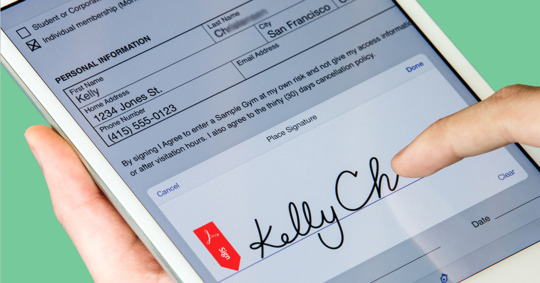
疫情之下,很多工作環境都由辦公室變成家居,但始終家中電腦的軟件未必齊全,可以做到全部工作。而 Adobe 宣布將開放更多免費工具和服務,並延長產品試用期,其中Adobe Acrobat Reader和Adobe Scan 將繼續供所有人免費使用,用戶於 5 月 31 日前更可每天免費使用網頁版的 Acrobat PDF 工具轉存與壓縮工具多達 10 次,同時延長 Adobe Sign 免費試用期至 90 天。 Read the full article
0 notes
Link
via Twitter https://twitter.com/PaperlessGate
0 notes